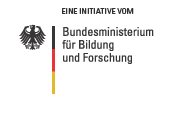Gülsah Gabriel: closing the door on viruses
-
 <ic:message key='Bild vergrößern' />
<ic:message key='Bild vergrößern' />
- Gülsah Gabriel Quelle: HPI
06.04.2011 -
The enormous flexibility of the influenza virus makes it both an extremely dangerous risk to health and a subject of fascination for the molecular biologist Gabriel Gülsah. Influenza viruses are particularly dangerous when they jump between species, as occurred with H5N1. This strain - now notorious as 'bird' flu' - is highly pathogenic for humans. At Hamburg's Heinrich Pette Institute, the junior researcher Gabriel studied the menacing transfer of this virus from birds to mammals, and in the process discovered that susceptibility to a viral infection can be reduced by shutting down highly specific cellular proteins.
Gülsah Gabriel credits her fascination with the influenza virus to the lectures given by her Professor of Virology at Marburg. "He conveyed to us the exciting qualities of flu: There's only one thing you can be sure of with the virus, and that is: you never know how it's going to change next." According to Gabriel, one of the reasons for the extreme flexibility of the virus is its replication machinery. "It's so error prone, that it is constantly incorporating changes into the RNA. The viruses find themselves in virtually constant evolution."
Avian influenza viruses penetrate the nuclei of human cells
In a short time, and with an extremely single-minded approach, the 32-year-old molecular biologist has revealed many of the flu virus' secrets. During her post-doctoral studies in Marburg, she was able to demonstrate how the highly pathogenic bird flu virus jumps from birds to mammals.
"This is made possible by a few mutations in the viral enzyme polymerase, which is responsible for the replication of viruses," she explains. Aided by the polymerase, the bird flu virus can penetrate into the nucleus, where it proliferates and spreads the infection. This is what makes the virus so dangerous and highly pathogenic, says Gabriel.
After her post-doctorate, the young researcher worked for nearly two years as a postdoctoral fellow at the University of Oxford, before being lured to Hamburg to head a junior research group at the Heinrich Pette Institute - Leibniz-Institute for Experimental Virology. If you ask the researcher about the recipe for her fast and linear career path, she thinks for a moment, and then answers resolutely that she always chose to take on the projects that held a natural fascination for her. "It's less important for a working group to be particularly well-known than for the project to light a bit of fire in you," she explains. In any case, you need perseverance and patience, but a certain passion for the topic certainly makes it easier to endure.
Blocking the transport mechanism
Thanks to her past positions, Gülsah Gabriel has built up a network that allows her interdisciplinary research approach to pay dividends. Recently, working together with an international researcher group, she succeeded in moving a crucial step closer to a more thorough understanding of the virus. "We took a closer look at the transportation mechanism, which smuggles the genetic material into the nucleus, and found that the respective components in birds and mammals are different," says the researcher. Specific proteins known as alpha-importins are required for the importing of the viral genetic information. In the current study, the group has presented a series of experiments that show that avian influenza viruses require importin-alpha-3, while viruses that have adapted to mammals require importin-alpha-7 to move into the nucleus and multiply.
The search for an inhibitor
Particularly interesting is the discovery that the multiplication of the influenza variant H1N1 (which became notorious as 'swine flu' in 2009) appears to depends on the two importin-variants alpha 3 and alpha-7. In experiments with mice, the researchers were able to confirm that the absence of importin-alpha-7 significantly weakens the course of infection with H1N1. "If we block this cellular protein for a short time, we could possibly prevent the spread of this infection," says Gabriel.
The public dialogue of flu is chiefly defined by the fear of a pandemic, and how this could be prevented. Seeing herself primarily as a researcher, Gülsah Gabriel chooses to hold back from this approach to the discussion. Nevertheless, the clear practical relevance of her research is important. Just recently, she joined the European Scientific Working Group on Influenza (ESWI), a consortium of European influenza experts. "Their goal is to improve the communication between decision makers in science, government, and industry in the fight against flu," she explains. The researcher calls the bridge between the laboratory and the patient 'From bench to bedside'. And thereby, it is essential for everybody to be sitting at the same table.
Author: Ute Zauft




